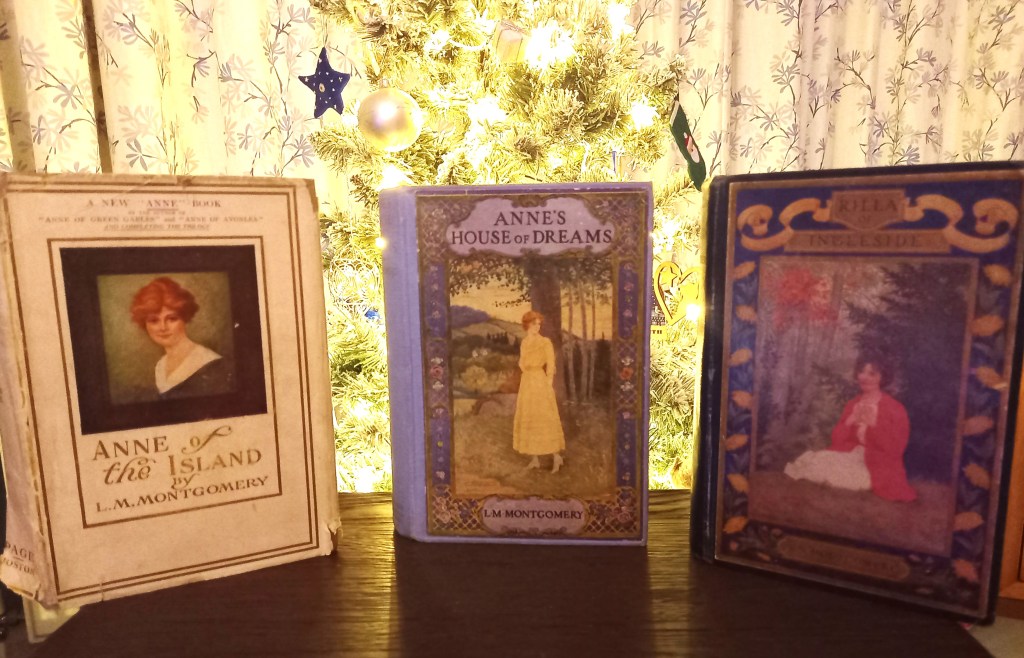Share a Book Everyone Should Read
I’ve been adapting the challenges all month so why should today be any different?! This is an impossible challenge anyway. There are so many books that should be read by everyone – or at least more widely. At least I’ve managed to narrow my selection down to one author. It might have been Jane Austen or Linda Newbery or Dorothy L Sayers or Paul Dowswell or Dorita Fairlie Bruce, but instead it is LM Montgomery. Yes, I know, it’s hardly a surprise.
All my reading life I have known the books of LM Montgomery. As a child I loved them and as I grew up and read them at different stages of my life, they became very important to me, making me ponder both my personal situation and the world at large. But as an adult I was increasingly irritated by the perception of Montgomery’s books and writing. I don’t think that Mark Twain did her reputation any favours by describing Anne as ‘the dearest, most moving and delightful child since the immortal Alice’. Whilst Anne is an engaging character, full of life and emotion, Twain’s description makes her sound twee and other-worldly, and too many people have been put off by that. I’ve done my best to combat that description and the idea that LM Montgomery is just a children’s author but it’s hard work and too few people have read anything more than Anne of Green Gables. Those of us who have read all her novels are aware that they are full of ideas and depictions of life that are very adult. We know that her books can be read on many levels and that there will always be something new to find in them.
It was the Anne sequence that I read first and they are the books that still hold the warmest place in my heart. Thanks to the the LM Montgomery Readathon on Facebook, founded by Andrea McKenzie and Benjamin Lefebvre, I’ve rediscovered some of Montgomery’s other books over the last few years, but Anne remains my favourite. (If you want to try a standalone, though, I recommend The Blue Castle.)

Anne of the Island is, I think, the pivotal novel in the sequence of books about Anne Shirley. The titles of the novels in the series all link Anne to a particular place. Strangely (or perhaps not – maybe you have to leave a place to discover its importance) it is in Island that Anne realises where her home is. Chronologically, in terms of publication, it sits between Anne of Avonlea and Anne’s House of Dreams. The titles of the first three novels gradually expand her creator’s depiction of where Anne belongs, from house to village to province. The fourth novel, though, sharply narrows it again. In Island, Anne remains the same person we meet first in Anne of Green Gables, but she has grown up, developed a sense of responsibility to go along with her imagination, found out about her past and coped with emotional trauma. In that moment of truth when she turns down Roy’s proposal of marriage, she finally understands that she cannot live in her imagination; she must live in the real world amongst people who are never perfect.

Her experiences in Anne of the Island give her the personal resources she needs to cope with the events of Anne’s House of Dreams. Anne of the Island has a strong sense of community, something Anne finally appreciates by the end of the novel. Home encompasses a wider space than that within private walls. The community in which those walls are set is crucial. And family is not restricted to those with blood-ties; it can be made up of those whom we choose. Visiting Bolingbroke and hearing about her parents is hugely significant for Anne, but she recognises that her people and place are on the Island. In House of Dreams she struggles with some very difficult events and situations, not just the death of Joyce, but also Leslie’s life and Gilbert’s ethical stance. By its conclusion Anne, far more acquainted with the harsh realities of life, knows what makes a place her home.
Happy Christmas!
Leave a comment